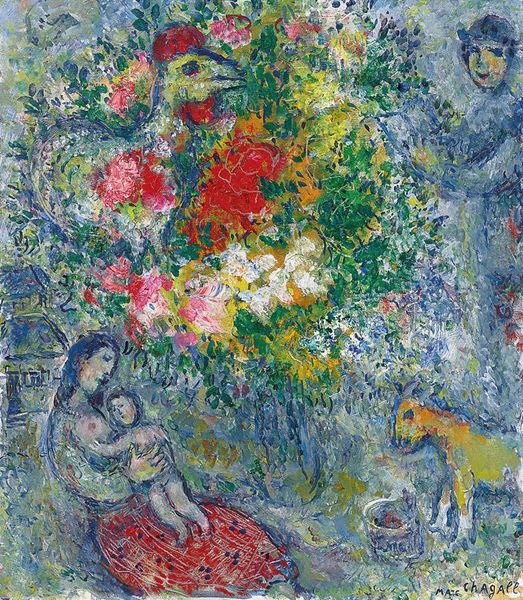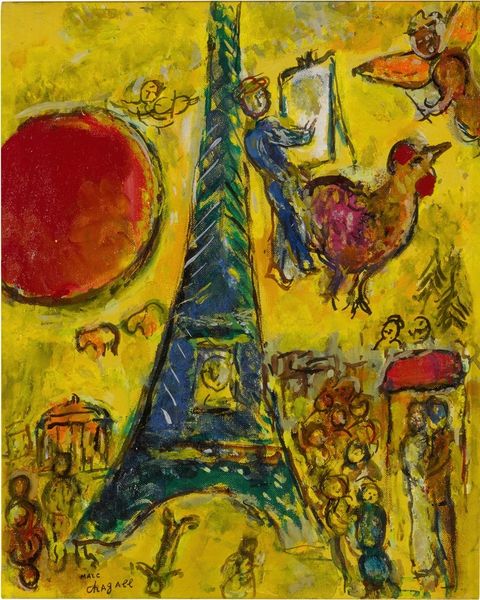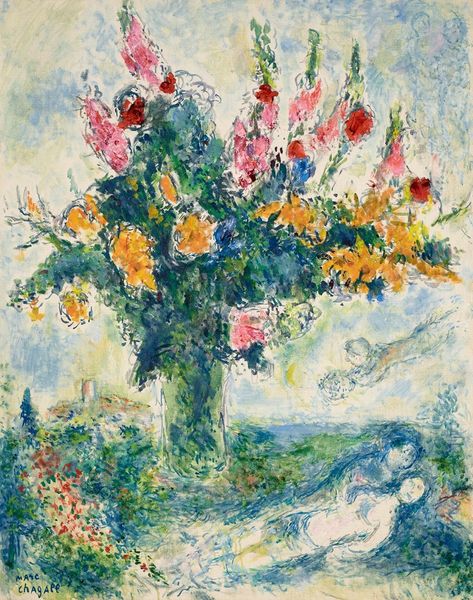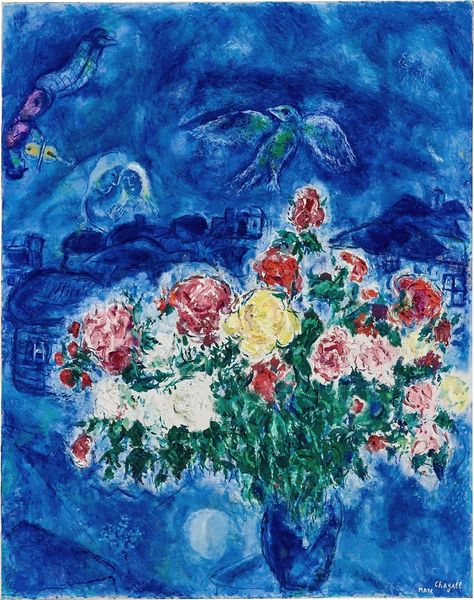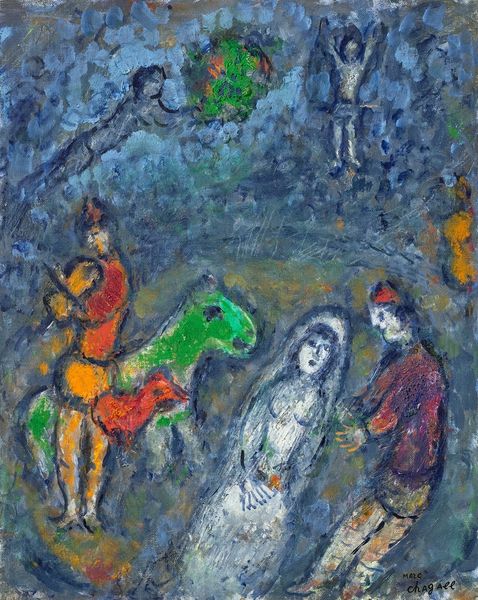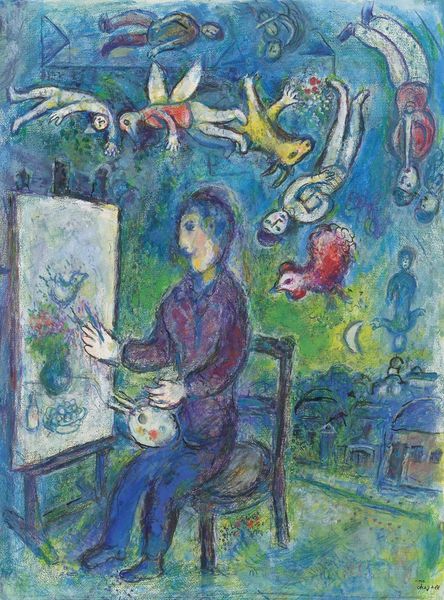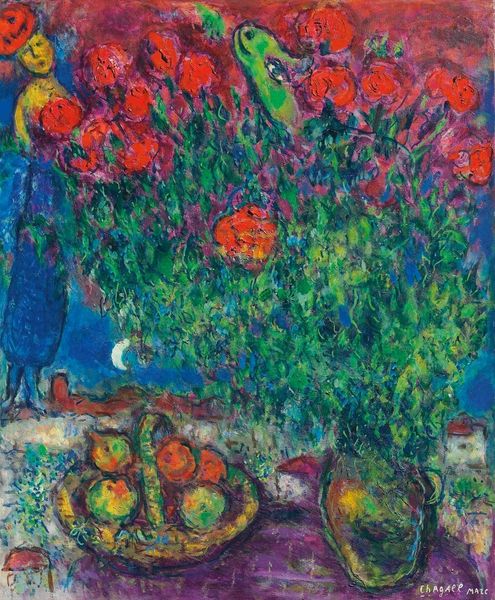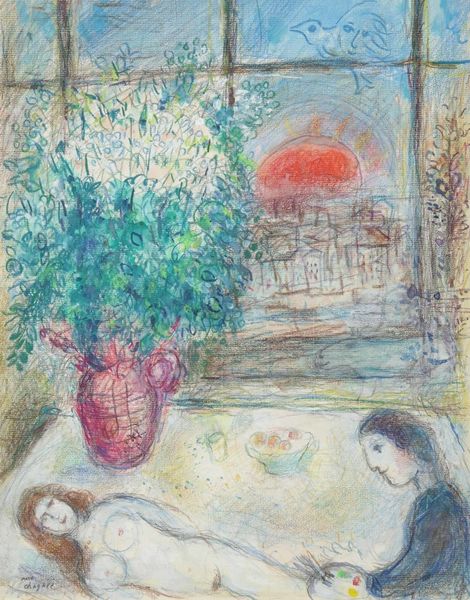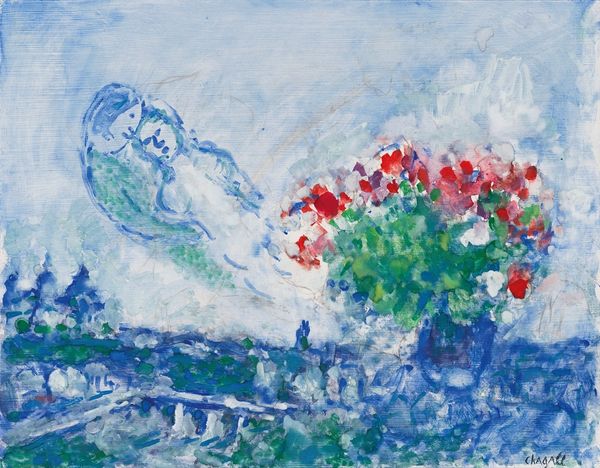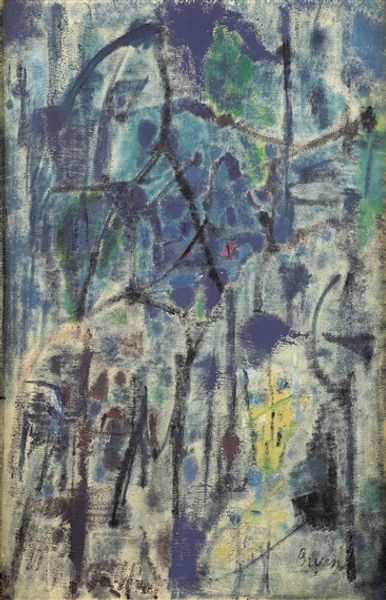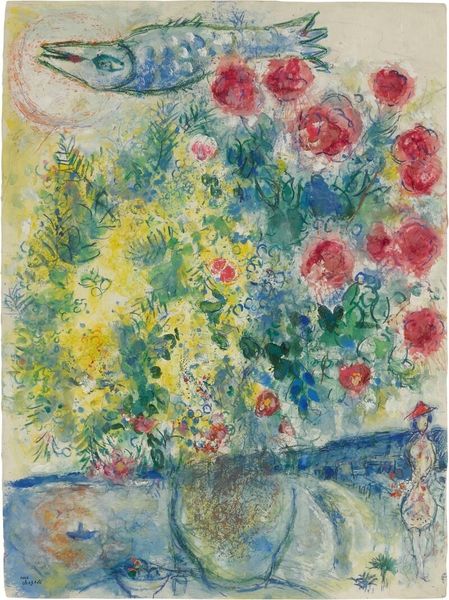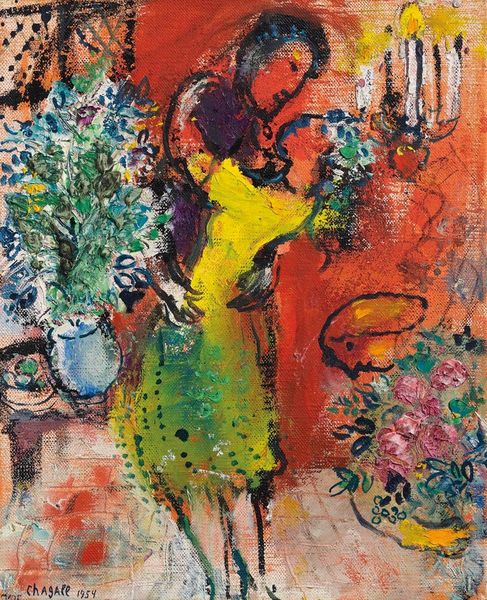
Copyright: Modern Artists: Artvee
Editor: This is Marc Chagall’s "L’Apparition de Don Quichotte au peintre," painted around 1980. It’s acrylic on canvas, and the whole composition feels dreamlike. What historical context shapes your interpretation of this piece? Curator: It's fascinating how Chagall brings together seemingly disparate elements, isn't it? Consider the figure of Don Quixote – he's not just a literary character; he's a symbol of idealism and fighting against societal norms, battling windmills that represent much bigger issues. Seeing him here raises questions about the artist's role, especially in a world constantly grappling with political and social injustices. How does Chagall use that symbolism, placing him amidst a cityscape of Paris and, of course, his own iconography of lovers and floating figures? Editor: That makes me think about the power dynamics, both within the painting and in the world outside it. Don Quixote tilts at windmills; is the painter in the image fighting similar battles, and what are they? Curator: Exactly. Chagall, as a Jewish artist who experienced antisemitism and displacement throughout his life, was deeply attuned to issues of identity and belonging. Do you see the figures, the floating lovers perhaps, as representations of universal humanity transcending those imposed boundaries? And what about the role of the artist as both observer and creator? How does that position empower or perhaps disempower them in that fight? Editor: I hadn't thought about it in terms of Chagall’s personal history, but it adds a whole other layer. So, it's like he's painting not just what he sees but also the struggles and hopes embedded in the world. Curator: Precisely! And consider the viewer’s position, ours. Art allows us entry to new modes of cultural imagination, and activism starts when one witnesses imaginatively what might be improved, or preserved, or restored. Editor: Thanks! I’ll never see Chagall the same way. It really highlights the intersection between art, identity, and social critique.
Comments
No comments
Be the first to comment and join the conversation on the ultimate creative platform.
